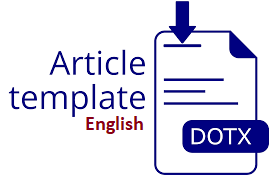Perancangan User Interface dan User Experience Aplikasi Pemandu Wisata Kebun Binatang Menggunakan Metode User Centered Design
DOI:
https://doi.org/10.30865/resolusi.v4i1.1270Keywords:
Zoo; User Interface; User Experience; User Centered Design; Mobile ApplicationAbstract
The development of technology in recent years has transformed the way humans interact with computers and has extended to various aspects of life, including the tourism sector, contributing to the distribution of more interactive information about tourist attractions, particularly through mobile applications. One of the emerging applications is the zoo tour guide application. Based on questionnaire results and processed using the System Usability Scale (SUS) method with an average score of 99.5 and a rating of "Excellent," an application was created and evaluated, known as the Zoo Tour Guide Application, to enhance the User Centered Design (UCD) approach. The design process involved wireframing and resulted in a prototype. The evaluation indicated that users could successfully navigate the testing scenarios. The UI/UX design yielded three main requirements for the application: animal page, map page, and ticket page.
Downloads
References
H. Naufal and A. G. Persada, “Desain Interaksi Berbasis User Experience pada Mobile Application?: Suatu Tinjauan Literatur,” Automata, vol. 1, no. 2, pp. 45–49, 2020.
N. Nwiabu, I. Allison, P. Holt, P. Lowit, and B. Oyeneyin, “User Interface Design for Situation-aware Decision Support Systems,” IEEE Int. Multi-Disciplinary Conf. Cogn. Methods Situat. Aware. Decis. Support. CogSIMA 2012, pp. 332–339, 2012.
K. R. Devi, A. M. Sen, and K. Hemachandran, “A working Framework for the User-Centered Design Approach and a Survey of the available Methods,” Ijsrp, vol. 2, no. 4, p. 8, 2012.
A. Krisnoanto, A. H. Brata, and M. T. Ananta, “Penerapan Metode User Centered Design Pada Aplikasi E-Learning Berbasis Android ( Studi Kasus?: SMAN 3 Sidoarjo ),” J. Pengemb. Teknol. Inf. dan Ilmu Komput. Univ. Brawijaya, vol. 2, no. 12, pp. 6495–6501, 2018.
Y. P. Savira, I. V Paputungan, and B. Suranto, “Analisis User Experience pada Pendekatan User Centered Design dalam rancangan Aplikasi Placeplus,” Automata, vol. 1, no. 2, pp. 28–29, 2020.
A. Anggoro and A. B. L. Mailangkay, “Perancangan UI/UX Aplikasi Android Online Monitoring Kualitas Air (Onlimo) Di BPPT Menggunakan Metode User Centered Design,” PERBANAS Inst. Pros. Semin. Nas., vol. 1, no. 1, pp. 24–26, 2021, [Online]. Available: https://journal.perbanas.id/index.php/psn/article/view/385
O. Yuliani and J. Prasojo, “Rancang Bangun Sistem Informasi Obyek Wisata Berbasis Web Menggunakan Metode User Centered Design (Ucd),” Angkasa J. Ilm. Bid. Teknol., vol. 7, no. 2, p. 149, 2017, doi: 10.28989/angkasa.v7i2.158.
B. Priyatna, “Penerapan Metode User Centered Design (Ucd) Pada Sistem Pemesanan Menu Kuliner Nusantara Berbasis Mobile Android,” AIMS J. Account. Inf. Syst., vol. 2, no. 1, pp. 1–14, 2019, doi: 10.32627/aims.v2i1.55.
M. R. Rahmatina and C. I. Ratnasari, “USER INTERFACE AND USER EXPERIENCE DESIGNING IN THE KAPUSTAKAN SYSTEM USING USER CENTRED DESIGN APPROACH (CASE STUDY: KERATON NGAYOGYAKARTA HADININGRAT),” JTIULM, vol. 7, no. 1, pp. 37–48, 2022.
S. Utomo Dwi, V. Effendy, and D. Jatimko Dwi, “ANALISIS DAN IMPLEMENTASI USER INTERFACE APLIKASI PENGENALAN HEWAN SEBAGAI MEDIA INTERAKTIF PEMBELAJARAN UNTUK PENDIDIKAN ANAK USIA DINI DENGAN TEKNOLOGI AUGMENTED REALITY MENGGUNAKAN METODE CHILD CENTERED DESIGN JURNAL TUGAS AKHIR ANALYSIS AND IMPLEMENTA,” vol. 4, no. 3, pp. 4892–4899, 2017.
S. Ernawati and A. D. Indriyanti, “Perancangan User Interface dan User Experience Aplikasi Medical Tourism Indonesia Berbasis Mobile Menggunakan Metode User Centered Design (UCD)(Studi …,” J. Emerg. Inf. …, vol. 03, no. 04, pp. 90–102, 2022, [Online]. Available: https://ejournal.unesa.ac.id/index.php/JEISBI/article/view/49296%0Ahttps://ejournal.unesa.ac.id/index.php/JEISBI/article/download/49296/40999
K. H. Timotius, Pengantar Metodologi Penelitian: Pendekatan Manajemen Pengetahuan Untuk Perkembangan Pengetahuan. 2017.
A. H. Jones, “Information technology and organisational change,” Des. Stud., vol. 11, no. 1, pp. 54–56, 1990, doi: 10.1016/0142-694x(90)90016-6.
J. Brooke, “SUS: A ‘Quick and Dirty’ Usability Scale,” Usability Eval. Ind., no. July, pp. 207–212, 2020, doi: 10.1201/9781498710411-35.
A. Bangor, P. Kortum, and J. Miller, “Determining what individual SUS scores mean; adding an adjective rating,” J. usability Stud., vol. 4, no. 3, pp. 114–23, 2009.
D. A. Permana, “Perancangan Desain User Interface/User Experience dengan Model Use Centered Desain Pada E-Commerce Cat Arjuna,” Front. Neurosci., vol. 14, no. 1, pp. 1–13, 2021.
M. Ikhsan and P. Sukmasetya, “Perancangan User Interface Aplikasi Central Islam Berbasis Mobile Application dengan Metode User Centered Design (UCD),” Seri Pros. Semin. …, pp. 97–103, 2020, [Online]. Available: http://prosiding.senadi.upy.ac.id/index.php/senadi/article/view/135
R. U. Sipayung and D. S. Purnia, “Perancangan UI / UX Jasamarga Digitalisasi Arsip Menggunakan UCD Pada PT. Jasa Marga Tbk,” Bina Insa. ICT J., vol. 10, no. 1, pp. 263–277, 2023.
R. Hartono and T. I. Ramadhan, “Implementasi Metode User Centered Design (UCD) dengan Framework Kanban dalam Membangun Desain Interaksi,” J. Algoritm., vol. 19, no. 2, pp. 823–831, 2022, doi: 10.33364/algoritma/v.19-2.1203.
E. Juliana, “KLIK: Kajian Ilmiah Informatika dan Komputer User Interface Design Information on Traditional Games in East Kotawaringin using UCD Method,” Media Online, vol. 3, no. 4, pp. 355–361, 2023, [Online]. Available: https://djournals.com/klik
Bila bermanfaat silahkan share artikel ini
Berikan Komentar Anda terhadap artikel Perancangan User Interface dan User Experience Aplikasi Pemandu Wisata Kebun Binatang Menggunakan Metode User Centered Design
ARTICLE HISTORY
Issue
Section
Copyright (c) 2023 Muhamad Ifan Nuriyana, Eko Setia Budi

This work is licensed under a Creative Commons Attribution 4.0 International License.
Authors who publish with this journal agree to the following terms:
- Authors retain copyright and grant the journal right of first publication with the work simultaneously licensed under Creative Commons Attribution 4.0 International License that allows others to share the work with an acknowledgment of the work's authorship and initial publication in this journal.
- Authors are able to enter into separate, additional contractual arrangements for the non-exclusive distribution of the journal's published version of the work (e.g., post it to an institutional repository or publish it in a book), with an acknowledgment of its initial publication in this journal.
- Authors are permitted and encouraged to post their work online (e.g., in institutional repositories or on their website) prior to and during the submission process, as it can lead to productive exchanges, as well as earlier and greater citation of published work (Refer to The Effect of Open Access).















